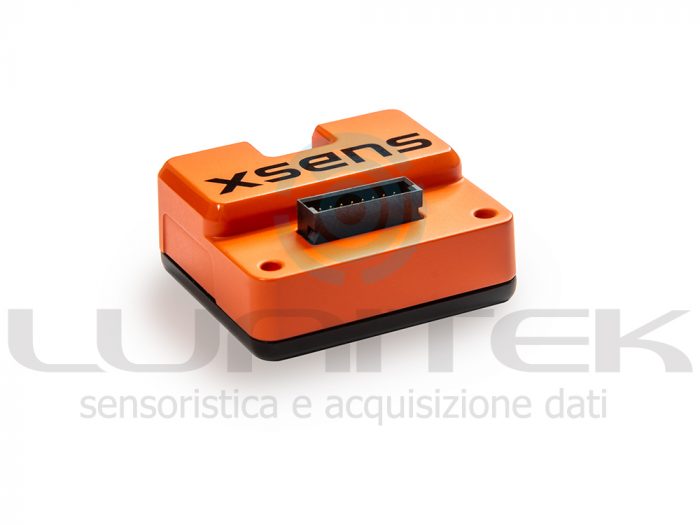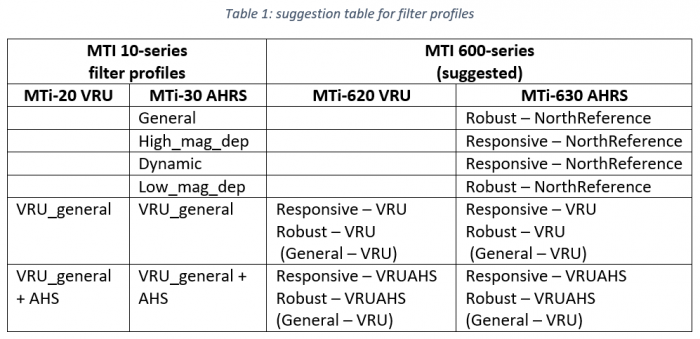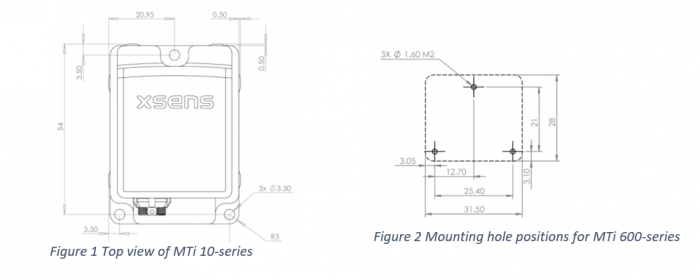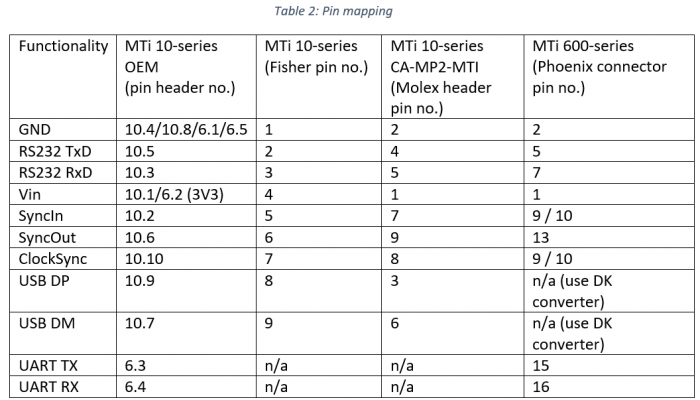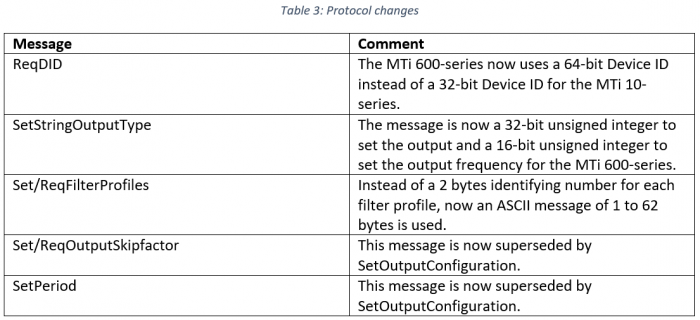Questo articolo fornisce un’introduzione alla nuova Serie MTi-600 per gli utenti che stanno migrando dalla Serie MTi-10. Sebbene i protocolli di comunicazione e la maggior parte delle funzionalità siano condivisi tra le due serie, ci sono alcune differenze importanti che devono essere considerate durante la migrazione.
Algorithm – Filter profiles
As with the MTi-20 and MTi-30, the MTi-620, MTi-630, and MTi-670 also feature a range of filter profiles to choose from. The MTi 600-series include new filter profiles as well as some “legacy” filter profiles.
Although the naming and behavior are not identical, the available options cover typically all applications.
Below a table is shown which makes suggestions on comparable filter profiles when migrating from the MTi 10-series to the MTi 600-series. Although the MTi-620 and MTi-630 support a “General” filter profile that can be used to reproduce “legacy” filter profiles, we recommend new users to start testing the Robust and Responsive filter profiles.
In contrary to the AHS filter option in the MTi 10-series, the AHS option is now incorporated in the heading behavior for the MTi 600-series, e.g.: VRUAHS. Active Heading Stabilization is a new feature designed for use with VRU products and therefore it will not be available for the MTi-670.
For the MTi-670 three different filter profiles are available: General, GeneralNoBaro and GeneralMag. These filter profiles were already available for the MTi-7 and the MTi-G-710.
A complete description of the filter profiles available for the MTi 600-series can be found in chapter 4 of the MTi 600-series Datasheet.
Hardware – Mounting
The footprint of the MTi 600-series is significantly smaller than that of the MTi 10-series. Hence, the mounting holes are different, see Figure 1 and Figure 2:
For more information on the hardware integration of the MTi 600-series, please refer to the MTi 600-series Hardware integration manual.
Hardware – Communication interfaces
The MTi 10-series provided support for 5 different communication interfaces: USB, RS232, RS485, RS422 and UART (OEM only). The MTi 600-series additionally supports a CAN interface, but a direct USB, RS485, and RS422 interface are no longer available.
A USB connection can still easily be created by using the Development Kit board, or by using the UART to USB converter that comes with it. The Development Kit board also provides access to an RS422 interface. The user can create his/her converter following the design of the Development Kit.
Hardware – Electrical interface
The MTi 600-series has a 16-pins connector, whereas the MTi 10-series connector only features 9 pins. These additional pins on the MTi 600-series are used among other things, for the GNSS input, CAN bus and UART interface.
Table 2 shows a conversion for the pins of the MTi 10-series to the MTi 600-series:
More information on the pinout and electrical specifications are available in the MTi 600-series Hardware integration manual.
Software
The MTi 600-series supports the public source XDA and MTDATA2 as does the MTi 10-series. There are however a few changes, which are highlighted below:
These messages are documented in the MT Low-Level Communication Protocol Documentation and the supplied Doxygen in the SDK.
The MTi 600-series are fully supported by MT Software Suite versions 2019.2 and up. Older versions of MT Manager, the MT SDK, and the Magnetic Field Mapper may not be fully compatible with the MTi 600-series. We advise all users to always download and install the latest version of the MT Software Suite, available at https://www.xsens.com/software-downloads.
Per maggiori informazioni contattaci:
https://www.lunitek.it/contatta-sensoristica-e-acquisizione-dati/






